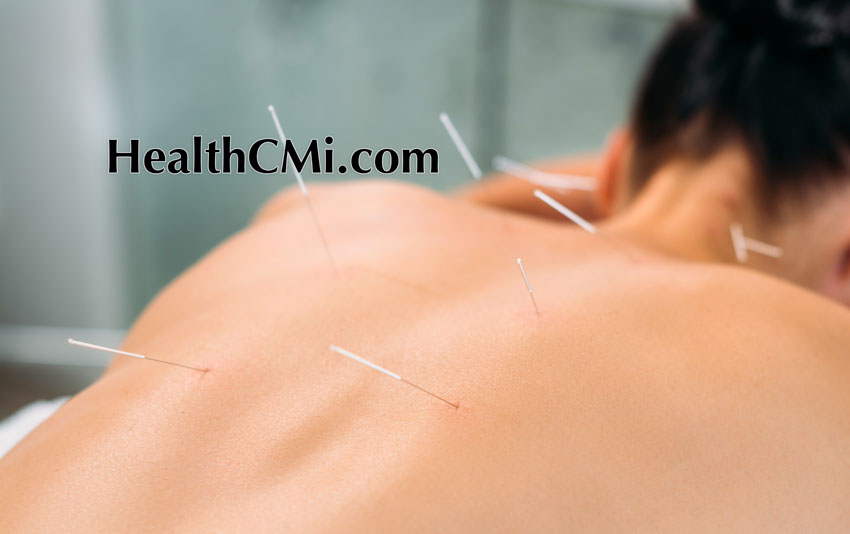
Acupuncture is an effective chronic heart failure (CHF) treatment modality. Researchers from Chuzhou First People’s hospital conducted a clinical trial examining the efficacy of treating CHF patients with standard biomedicine and that of acupuncture plus standard biomedicine. The latter yielded superior patient outcomes. As a result, the researchers conclude that an integrative medicine protocol yields superior patient outcomes. [1]
The acupuncture involved the application of warm needle acupuncture (using moxibustion) on back-shu points. Acupuncture plus drug therapy produced a total effective rate of 90.6%. Drug monotherapy produced a 70.5% total effective rate. The researchers note that acupuncture “improve[d] cardiac functions and reduce[d] inflammatory reactions.” [2] The measurements were based on the following parameters.
The researchers collected data using the following observational parameters: left ventricular end-diastolic diameter (LVEDD), left ventricular end-systolic dimension (LVESD), left ventricular ejection fraction (LVEF) for cardiac function, N-terminal pro-B-type atriureticpeptide (NT-proBNP), and C-reactive protein (CRP) for inflammation, root mean square of successive differences (rMSSD), standard deviation of N-N intervals (SDNN), and 50 percent in the total number of N-N intervals (PNN50) for heart rate variability. The researchers observed that both LVEDD and LVESD declined while LVEF increased in the two groups, with more significant improvement demonstrated in the warm needle acupuncture group. NT-proBNP and CRP presented similar changes. The same is true for rMSSD, SDNN, and PNN50.
The study adhered to the following protocols. A total of 104 patients received treatments in the hospital. The patients were randomly separated into two groups. The first group of 51 patients received the standard pharmaceutical drug therapy while the remaining 53 patients received warm needle acupuncture to treat their chronic heart failure.
The warm needle acupuncture group consisted of 36 males and 17 females. Their ages ranged from 40–85 years. The average age was 68 ±10 years. Their body mass was 42–83 kilograms. The mean body mass was 60.71 ±8.22 kilograms. Their course of condition ranged from 31–79 months. The pharmaceutical drug control group had 34 males and 17 females. The age range was 31–79 years. The average age was 68 ±10 years. Their body mass was 41–85 kilograms. The mean body mass was 61.41 ±7.91 kilograms. The course of condition ranged from 6–28 months. The mean course of condition was 12.41 ±4.53 years. The patients in both groups exhibited chronic heart failure based upon clinical symptoms, imaging, and laboratory findings.
Doctors administered spironolactone and metoprolol to the patients in the drug control group. Initially they received 10 mg twice daily of spironolactone. The dosage gradually increased to 40 mg per day. The initial dosage of metoprolol was 12.5 mg twice daily, it was gradually increased to 50 mg per day. The treatment lasted for one month.
The warm needle acupuncture group also received the standard drug protocol, as stated above, along with warm needles. The patients sat in a lateral position. The acupuncturist inserted sterile needles (0.35 × 25 mm) obliquely into patients’ skin. Insertion depth was 1–1.5 centimeters. Upon achieving a deqi sensation, the acupuncturist attached moxa (2.5 cm) to the needle ends. The procedure was conducted once a day for five days followed by a two day break, thus completing the treatment cycle. Patients underwent four treatment cycles in total. The acupoints used in the procedure included bilateral BL13 (Feishu), BL14, (Jueyinshu), and BL15 (Xinshu).
The following three categories describe the efficacy rate: significantly effective, effective, and ineffective. Patients who are in the significantly effective group experienced that their symptoms of heart failure disappeared and their cardiac function improved by two levels. Those in the effective group noticed that their symptoms of heart failure improved and likewise, their cardiac function improved by two levels. The patients’ symptoms of heart failure in the ineffective group were the same or worsened.
Patients in the warm needle acupuncture group fell into these categories: 20 were significantly effective, 28 were effective, and 5 were ineffective. Total efficacy rate was 90.6%. In the drug control group, 16 patients were significantly effective, 21 were effective, and 14 were ineffective. The total efficacy rate for the drug controlled group was 70.5%. Researchers learned that the application of warm needle acupuncture on back-shu points in conjunction with standard drug therapy increases cardiac function outcomes in CHF patients by 20.1%.
References
[1, 2] Wu Pinxia, Liu Yu, Liu Yayuan, Efficacy Observation of Warm Needling Therapy at Back Shu Points for Chronic Heart Failure and Its Effect on Patient's Cardiac Function, Shanghai Journal of Acupuncture, Issue 2, Volume 42, February, 2013.


